
D&D Beyond is a compendium of official Dungeons & Dragons information, originally created by a licensed third-party and recently acquired by Wizards of the Coast. D&D Beyond has exceptional character creation tools that — through integration via a third-party browser plugin for Google Chrome — can directly interact with Roll20.net, one of the most popular virtual tabletops, making it easy to start play games online with friends.
Because you must have purchased a digital version of any book outside of the core (Player’s Handbook, Dungeon Master’s Guide, Monster Manual), the initial options for character creation are somewhat limited. However, 12 classes and 9 classes are provided for use for free.
Drawing Inspiration
Developing a new character — for a long-time campaign or even just a one-shot (a game played in one day) — is a fun and creative process. The possibilities are endless: the spellbook unfilled, the angst as yet indeterminate (shall my parents have been eaten by wolves? Fallen off a cliff in a desperate flight to freedom? Or oddly supportive, understanding, and — most shockingly — still alive?). However, newer players — especially those who have never played — are sometimes overwhelmed with the number of options when creating a new character. This tutorial is designed to help make the process simpler, especially for a first time player. To get you started with basics, here are a couple of links:
- Download a free copy of the basic rules for 5E from Wizards of the Coast.
- Create an account through D&DBeyond.com, the site from Wizards of the Coast that provides a free-to-use character builder and venue to purchase additional character options.
To get started thinking about who your character is, consider the heroes or heroines you already love. What makes them special? Perhaps they are an aloof but impossibly gifted archer (Legolas, the Lord of the Rings trilogy) or a mother out for vengeance upon those who have wronged her and her child (Beatrix Kiddo, Kill Bill vol. 1 and 2). While you don’t have to recreate this character per say, consider the things you like about this character. Is it their dogged determination? An unwillingness to compromise their principles? Their unbridled optimism?
Twist the Trope
The descriptions at left include suggestions of iconic characters from popular culture that represent each class. However, you shouldn’t necessarily feel constrained by these types. Sometimes it can be fun to play against type for a given class. Check out this article from the OverpreparedGM, Playing Against (D&D) Class Types.
Character Class
With a character personality archetype in mind, consider how such a person would be likely to fight or react to a fight. This can help you determine the character class you want to play. Here is an excellent, detailed decision tree that might help.
Once you’ve chosen your class, you’re most of the way there! Your next major decision is character fantasy race, the thing that — in the D&D universe — makes elves different than dwarves different than run-of-the-mill humans. D&D Beyond offers a ridiculous number of character fantasy races, depending upon the sourcebooks you have purchased. The twelve classes provided for free include:
- Barbarian: A fierce warrior of primitive background who can enter a battle rage; ex. Conan the Barbarian and Red Sonya, Cuchulain of Celtic folklore, Gimli of the Lord of the Rings trilogy, Hulk and Drax (Guardians of the Galaxy) of the Marvel Cinematic Universe
- Bard: An inspiring magical whose power echoes the music of creation; ex. Jaskier from the Witcher series, Sam from the Lord of the Rings trilogy, Starlord (Guardians of the Galaxy) of the Marvel Cinematic Universe
- Cleric: A priestly champion who wields divine magic in service of a higher power; Cordelia Chase from Angel, Melisandre of the A Song of Ice and Fire series
- Druid: A priest of the Old Faith, wielding the powers of nature and adopting animal forms; Captain Planet, Poison Ivy of DC Comics, Groot (Guardians of the Galaxy) of the Marvel Cinematic Universe
- Fighter: A master of martial combat, skilled with a variety of weapons and armor; William Wallace of Braveheart, Boromir and Eowyn from the Lord of the Rings trilogy, Sorcha from Willow
- Monk: A master of the martial arts, harnessing the power of the body in pursuit of physical and spiritual perfection; Li Mu Bai from Crouching Tiger, Hidden Dragon, Beatrix Kiddo of the Kill Bill series, Melinda May from Marvel’s Agents of S.H.I.E.L.D. series
- Paladin: A holy warrior bound to a sacred oath; Perceval from Arthurian lore, Inigo Montoya from the Princess Bride; Ned Stark and Breanne of Tarth from a Song of the A Song of Ice and Fire series by Robert Jordan, She-Ra, the Mandalorian, Thor of the Marvel Cinematic Universe
- Ranger: A warrior who combats threats on the edges of civilization; Aragorn of the Lord of the Rings series, Drizzt Do’Urden of the Forgotten Realms, Buffy from Buffy the Vampire Slayer, Hawkeye of the Marvel Cinematic Universe
- Rogue: A scoundrel who uses stealth and trickery to overcome obstacles and enemies; Robin Hood, Black Widow from the Marvel Cinematic Universe, Frodo from the Lord of the Rings trilogy, Rocket Raccoon (Guardians of the Galaxy) of the Marvel Cinematic Universe, Zorro
- Sorcerer: A spellcaster who draws on inherent magic from a gift or bloodline; Scarlet Witch from the Marvel Cinematic Universe, Henry Dresden of the Dresden Files
- Warlock: A wielder of magic that is derived from a bargain with an extraplanar entity; Janosz Poha from Ghostbusters 2, Morgan le Fey from Arthurian Legend, most witches
- Wizard: A scholarly magic-user capable of manipulating the structures of reality; Gandalf of the Lord of the Rings series, Hermione of Harry Potter, Dr. Strange from the Marvel Cinematic Universe; Willow from Buffy the Vampire Slayer

may foster unsavory connections.
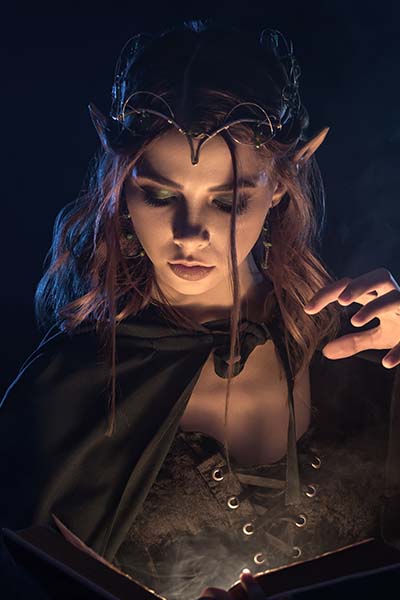
acquisition of arcane information.
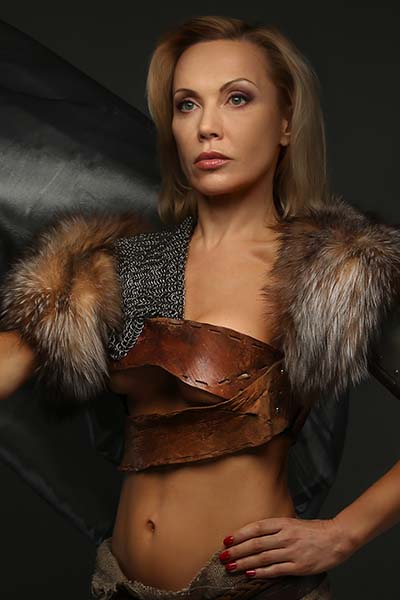
mastering martial technique.
Character Fantasy Race
Unlike classes, there are many fantasy races to choose from, nine of which can be chosen for free and which include Dragonborn, Dwarf, Elf, Gnome, Half-Elf, Halfling, Half-Orc, Human, and Tiefling. Notably, each fantasy race have innate bonuses that might be of particular benefit to the class you’ve chosen above, so — if that’s something important to you — be sure to take those bonuses into consideration.
Whichever fantasy race you choose, consider how being part of that society — or perhaps outside of it — would have affected your character’s background. For example, a Dwarf might have grown up around mining and metalwork. If they spent the majority of their life underground, perhaps they have to squint when in full sun. Elves often live up to 750 years. How might that color their opinion of the motivations of the more short-lived mortals such as humans? Half-Orcs have an intimidating appearance to most and are often unfairly assumed to be bloodthirsty and aggressive. Does your character seek to take advantage of this potential misimpression or actively work to subvert societal expectations?

often thought of as ferocious.
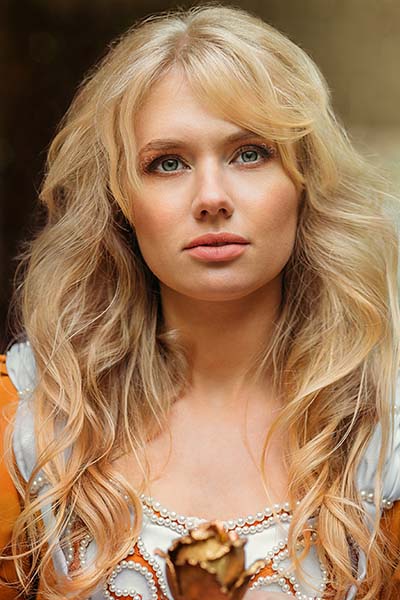
versatile, if short-lived fantasy race.
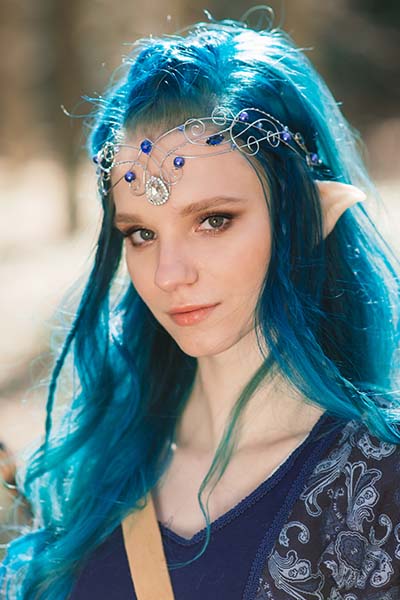
their pointed, elongated ears.
Character Background
Fifth edition Dungeons & Dragons introduced the idea of “backgrounds,” which are, in essence, shorthand for many of the typical adventurer archetypes. These archetypes afford your character certain in-game benefits. For example, the Soldier background includes a feature called “Military Rank” that grants your character prestige with NPCs (non-player characters) that have respect for your character’s military affiliation. The Noble background makes your character welcome in high society, which can help smooth the way in diplomatic situations with aristocrats. The six character backgrounds included for free include:
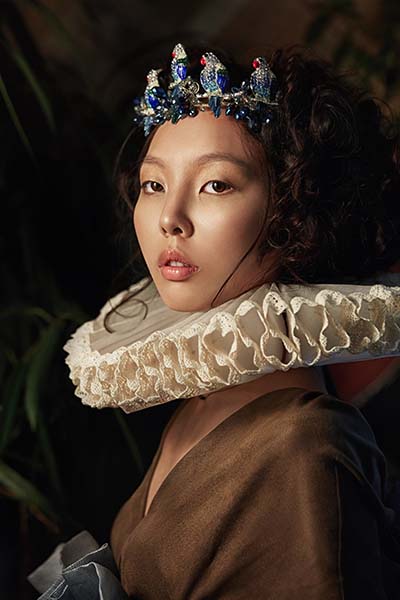
a game that includes a lot of roleplay.
- Acolyte: You have spent your life in the service of a temple to a specific god or pantheon of gods. You act as an intermediary between the realm of the holy and the mortal world, performing sacred rites and offering sacrifices in order to conduct worshipers into the presence of the divine.
- Criminal / Spy: You are an experienced criminal with a history of breaking the law. You have spent a lot of time among other criminals and still have contacts within the criminal underworld. You’re far closer than most people to the world of murder, theft, and violence that pervades the underbelly of civilization, and you have survived up to this point by flouting the rules and regulations of society.
- Folk Hero: You come from a humble social rank, but you are destined for so much more. Already the people of your home village regard you as their champion, and your destiny calls you to stand against the tyrants and monsters that threaten the common folk everywhere.
- Noble: You understand wealth, power, and privilege. You carry a noble title, and your family owns land, collects taxes, and wields significant political influence. You might be a pampered aristocrat unfamiliar with work or discomfort, a former merchant just elevated to the nobility, or a disinherited scoundrel with a disproportionate sense of entitlement. Or you could be an honest, hard-working landowner who cares deeply about the people who live and work on your land, keenly aware of your responsibility to them.
- Sage: You spent years learning the lore of the multiverse. You scoured manuscripts, studied scrolls, and listened to the greatest experts on the subjects that interest you. Your efforts have made you a master in your fields of study.
- Soldier: War has been your life for as long as you care to remember. You trained as a youth, studied the use of weapons and armor, learned basic survival techniques, including how to stay alive on the battlefield. You might have been part of a standing national army or a mercenary company, or perhaps a member of a local militia who rose to prominence during a recent war.
You can read detailed information about each of these six backgrounds and their benefits here.
Repurposing an Aesthetic
When deciding upon an appearance for your character, if you repurpose the appearance of an existing character — such as one from a popular video game or other media — you can often find many different pictures and even physical merchandise (shirts, figures, posters, etc.) to represent your newly-created character.
This assumes that you don’t already have strong associations with the character whose appearance you’re repurposing that interfere with your vision of the character you want to play.
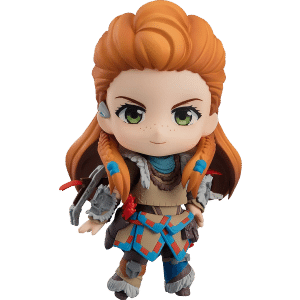
Additional Options
These three pieces — character class, character fantasy race, and background — should provide you a good foundation of the type of character you’re going to play. There are, of course, additional options to consider, including:
- Stats: These numbers represent how skilled your character is in physical and mental attributes including Charisma, Constitution, Dexterity, Intelligence, Strength, Wisdom.
- Skills: These are the talents with which your character is proficient. Examples include Animal Handling, Survival, and Acrobatics. Each of these skills is based on one of the Stats listed above, and many players opt to focus on the skills that tie into their class’s most useful stat.
- Spells: Many characters that use magic have to choose which spells their characters know while some classes such as paladin have full access to all their spells (although their available spell list tends to be smaller than that of other classes). Because of the additional layer of choices, spellcasters are generally seen as more a complex character than those classes that do not have spells (ex. fighter, rogue).
- Class options: Every class gains features or a choice of features that help make them distinct. There are too many such options to go into here, but thankfully D&D Beyond presents these choices in a straightforward way.
- Personality: If you used a specific character to inspire your class and fantasy race choices, you may find that character influencing personality traits. One option is to take one of the popular personality tests — such as the Meyers Briggs offered by 16 Personalities — as if you were your character — then use the generated personality profile to help decide how your character would act or react in specific situations.
- Alignment: Hand-in-hand with personality is character alignment, an indication of your character’s morality (good, neutral, or evil) and the value they place upon order (lawful, neutral, or chaotic). In those editions of Dungeons & Dragons that use alignment, there are a total of 9 possible options:
| Lawful Good | Neutral Good | Chaotic Good |
| Lawful Neutral | True Neutral | Chaotic Neutral |
| Lawful Evil* | Neutral Evil* | Chaotic Evil* |
- Appearance: This is often either the first or last consideration when creating a character, depending upon the player. The Internet has a wealth of resources you can use to provide yourself and others an idea of what your character looks like, including Pinterest, ArtStation, and DeviantArt. And if you would like to create your character’s appearance from scratch, HeroForge is an excellent option.
Additional Resources
Check out some of the following resources to help you get started:
[link-library settings=”1″ categorylistoverride=”2″ tableoverride=”1″]
For more helpful new player tips, check out this video by cosplayer, GM, and player, Ginny Di:
